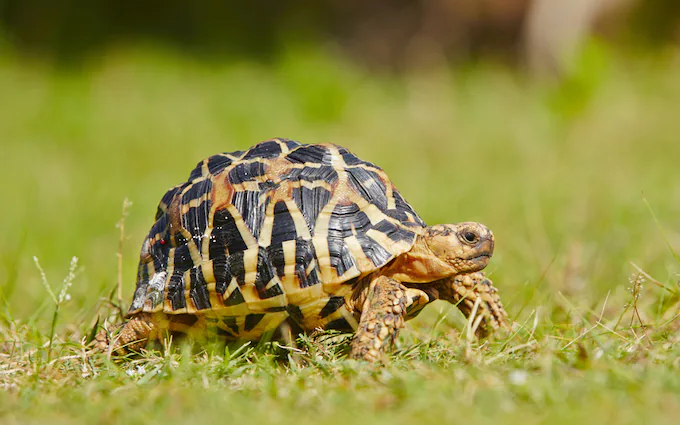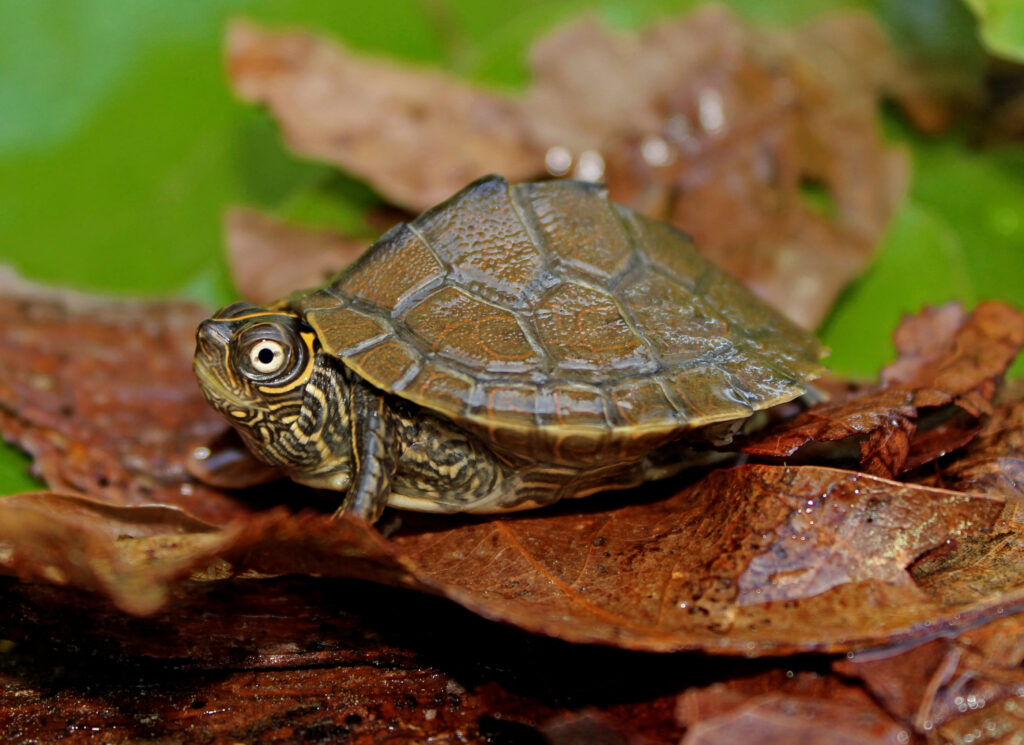Table of Contents
ToggleIntroduction

Turtles, which include anything from terrestrial box turtles to aquatic sliders, have a wide range of food patterns. Some are staunch herbivores, preferring a diet high in vegetables and greens, while others are omnivores, choosing a mix of plant and animal stuff. Can Turtles Eat Celery? Whether Celery is suitable for turtle diets leads us to look into the complexities of turtle species, their nutritional needs, and the potential benefits or concerns linked with this crisp and verdant vegetable.
Turtle Types And Diets
Herbivorous Turtles
Preferences for Vegetables: Herbivorous turtles, exemplified by species like the Sulcata Tortoise or the Red-Footed Tortoise, strongly favour a plant-based diet. Vegetables, especially leafy greens, form the cornerstone of their nutritional intake. These turtles are adapted to extract essential nutrients from plant materials efficiently. Showcasing preferences for various vegetables that mimic their natural foraging habits.
Nutritional Requirements: The dietary habits of herbivorous turtles emphasize the importance of meeting specific nutritional requirements. Leafy greens like kale, collard, and dandelion are rich sources of essential vitamins, minerals, and fibre. Calcium, vital for shell health, is often obtained through a combination of vegetables and calcium supplements. Ensuring these turtles receive a well-rounded and nutritionally balanced diet.
Omnivorous Turtles
Inclusion of Vegetables in Diet: Omnivorous turtles, typified by species like the Red-Eared Slider or the Painted Turtle, showcase a broader dietary spectrum, including plant and animal matter. While they readily consume aquatic plants, insects, and small animals, vegetables provide necessary vitamins and minerals. Including vegetables contributes to the diversity of their diet, supporting overall health and well-being.
Considerations for a Balanced Diet: To ensure omnivorous turtles have a balanced meal, you must think about both plant and animal parts. Vegetables such as leafy greens, carrots, and others contribute essential nutrients. While protein sources like insects, worms, or commercial turtle pellets fulfil their animal dietary requirements. A well-balanced diet mirrors the diversity of their natural habitats and ensures these adaptable turtles receive optimal nutrition.
Nutritional Content Of Celery

Vitamins and Minerals: With its crisp and watery nature, Celery brings a modest yet noteworthy array of vitamins and minerals to the table. It contains vitamins such as vitamin K, essential for blood clotting, and vitamin C, known for its antioxidant properties. Additionally, Celery provides minerals like potassium, which plays a role in maintaining proper hydration and electrolyte balance. While not an exhaustive source of nutrients, Celery contributes valuable elements to the overall nutritional composition.
Fibre Content: One standout feature of Celery is its fibre content, a characteristic that holds significance for digestive health. Fibre is crucial for promoting regular bowel movements and supporting the overall functioning of the digestive system. For turtles, a diet with adequate fibre is essential to ensure proper digestion, nutrient absorption, and waste elimination. Celery, with its fibrous stalks, can be a beneficial addition to a turtle’s diet in this regard.
Potential Benefits for Turtles: The nutritional profile of Celery aligns with some of the dietary needs of turtles. The vitamins and minerals it offers contribute to the overall well-being of these reptiles. Additionally, the fibre content in Celery can aid in maintaining a healthy digestive system for turtles. While Celery may not be a primary food source, its inclusion in a varied diet can complement other vegetables, leafy greens, and protein sources to create a more nutritionally diverse menu for turtles.
Potential Concerns And Considerations
Oxalates and Calcium Binding: One consideration when incorporating Celery into a turtle’s diet is the presence of oxalates. Oxalates are compounds found in certain vegetables, including Celery, that have the potential to bind with calcium. In high concentrations, oxalates may interfere with calcium absorption, which is vital for maintaining the health of a turtle’s shell. While Celery contains lower oxalate levels than other vegetables. It is prudent to offer it in moderation and as part of a balanced diet to mitigate any potential calcium-binding effects.
Moderation in Feeding: Like any food item, Celery should be made available to turtles in moderation. While it brings nutritional benefits, overfeeding Celery or any single type of food can lead to an imbalanced diet. Turtles thrive on dietary diversity, and an excessive intake of Celery may not provide the full spectrum of nutrients required for their overall well-being. A balanced approach that includes a variety of vegetables, leafy greens, fruits, and, for omnivorous turtles. Appropriate protein sources ensures that turtles receive a nutritionally comprehensive diet.
Variety in the Diet: Introducing variety into a turtle’s diet is crucial for meeting its diverse nutritional needs. While Celery offers certain vitamins, minerals, and fibre, Adding it is necessary with other vegetables, leafy greens, and suitable protein sources for omnivorous turtles. A diet encompassing a range of foods mimics the diversity of their natural habitats. Providing turtles with a more comprehensive and nutritionally balanced menu.
Expert Opinions And Guidelines

Veterinarian Recommendations: Reptile veterinarians, with their specialized knowledge in the care of turtles, play a pivotal role in shaping dietary guidelines. When considering the inclusion of Celery or any other food item in a turtle’s diet, consulting with a veterinarian is crucial. These professionals offer expert advice tailored to the turtle’s specific species, age, and health condition. Veterinarians can provide insights into the nutritional balance, portion sizes, and overall dietary considerations, ensuring the turtle’s health is optimized.
Insights from Turtle Enthusiasts: Experienced turtle enthusiasts and keepers often contribute valuable insights based on their practical experiences. Online forums, reptile communities, and enthusiast-authored articles provide platforms for sharing anecdotal information, feeding strategies, and observations about turtle behaviour. While these insights can be beneficial, it’s essential to distinguish between personal experiences and scientifically vetted advice. Enthusiasts can offer perspectives on preferences, behavioural cues, and practical tips, complementing veterinarians’ professional guidance.
Balanced Diets for Optimal Turtle Health: A consensus among experts, including veterinarians and seasoned turtle enthusiasts, revolves around a balanced diet. Balancing the nutritional components of a turtle’s diet. Including vegetables like Celery, is essential for their growth, shell development, and overall vitality. A balanced diet encompasses the right mix of vegetables and leafy greens, fruits, and, for omnivorous turtles, appropriate protein sources.
Conclusion
Turtles, with their different species and dietary requirements, require caregivers to walk a fine line between satisfying nutritional needs and avoiding potential problems. The nutritional profile of Celery, which is high in vitamins, minerals, and fibre, presents it as a possible contribution to a well-balanced diet. However, this finding was linked to worries about oxalates and the need for moderation, especially in turtles that eat plants, where calcium binding may be problematic.







